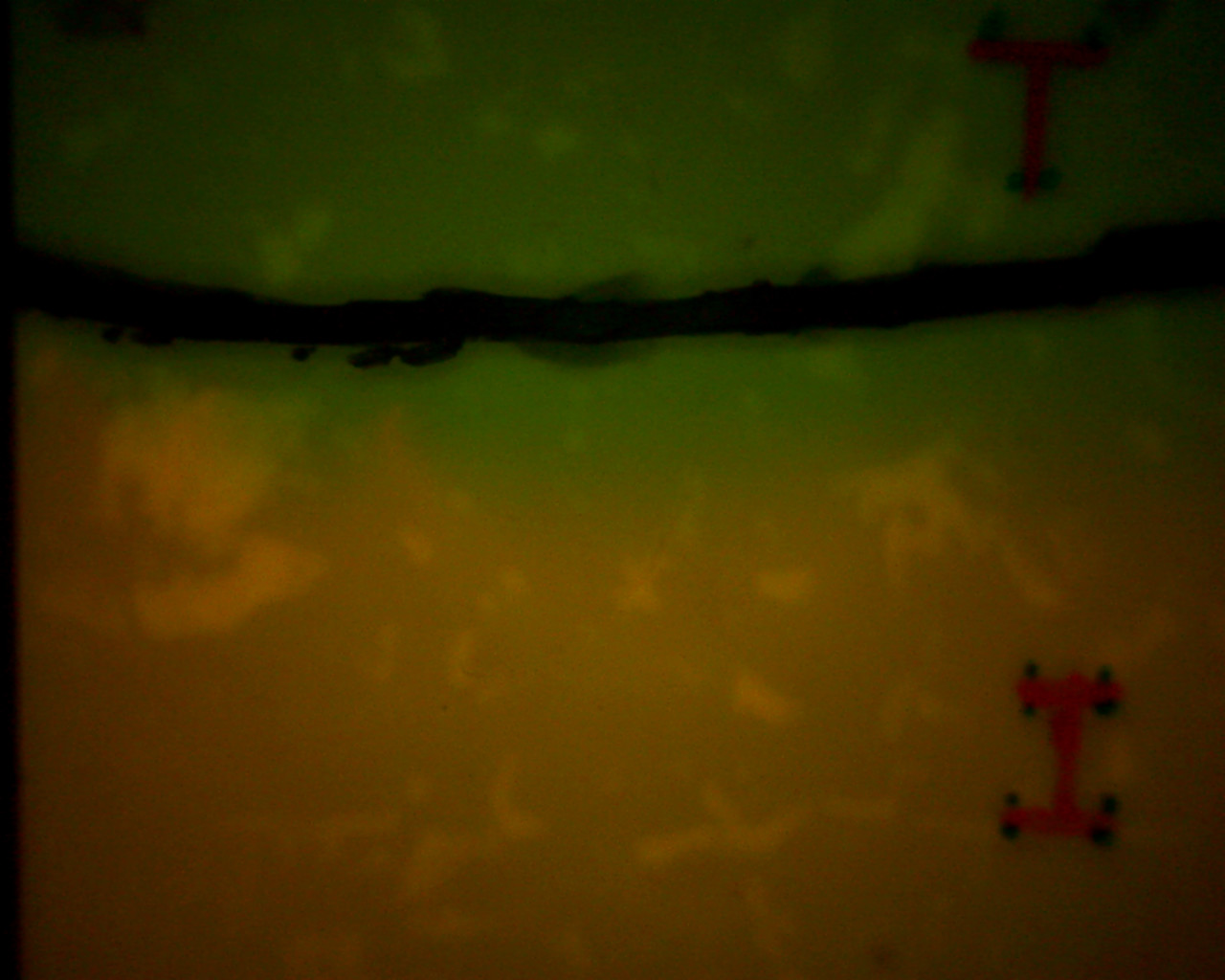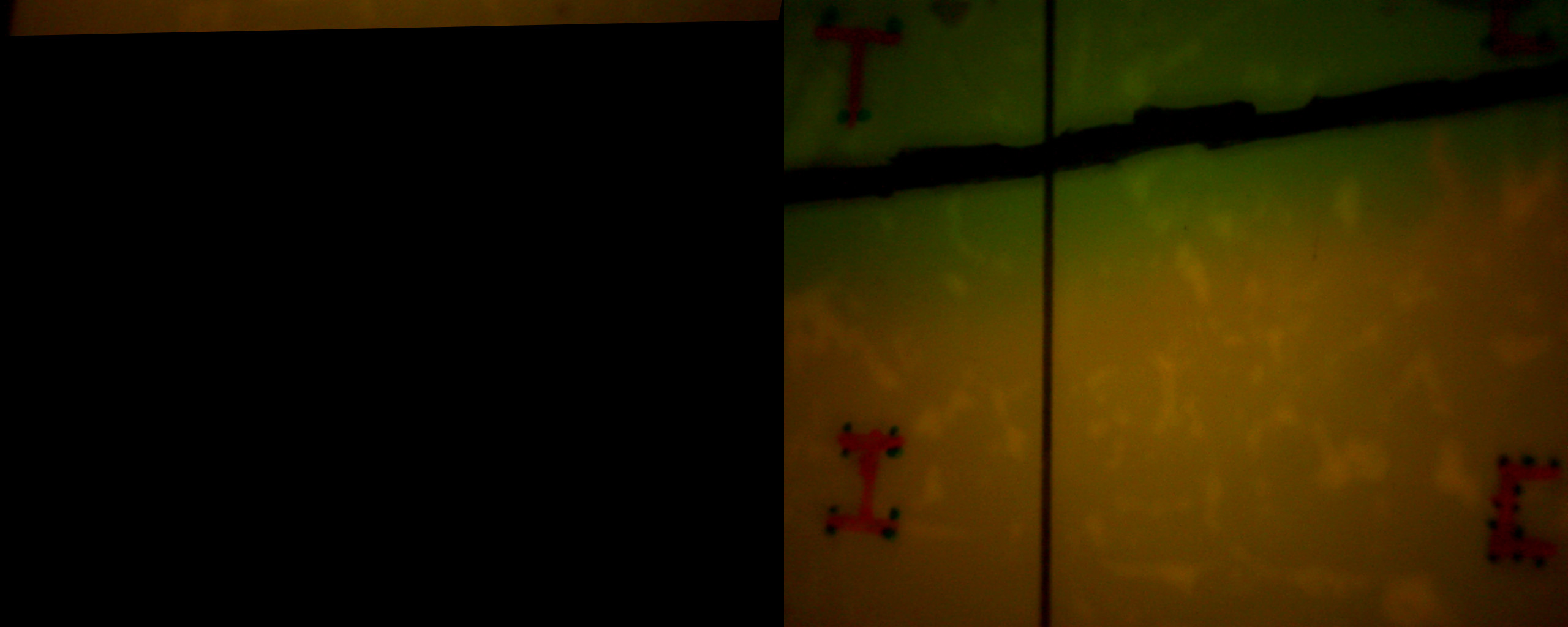I'm trying to stitch 2 images together by using template matching find 3 sets of points which I pass to cv2.getAffineTransform() get a warp matrix which I pass to cv2.warpAffine() into to align my images.
However when I join my images the majority of my affine'd image isn't shown. I've tried using different techniques to select points, changed the order or arguments etc. but I can only ever get a thin slither of the affine'd image to be shown.
Could somebody tell me whether my approach is a valid one and suggest where I might be making an error? Thanks in advance.
This is the final result that I get. Here are the original images (1, 2) and the code that I use:
import cv2
import numpy as np
def showimage(image, name="No name given"):
cv2.imshow(name, image)
cv2.waitKey(0)
cv2.destroyAllWindows()
return
image_a = cv2.imread('image_a.png')
image_b = cv2.imread('image_b.png')
def get_roi(image):
roi = cv2.selectROI(image) # spacebar to confirm selection
cv2.waitKey(0)
cv2.destroyAllWindows()
crop = image_a[int(roi[1]):int(roi[1]+roi[3]), int(roi[0]):int(roi[0]+roi[2])]
return crop
temp_1 = get_roi(image_a)
temp_2 = get_roi(image_a)
temp_3 = get_roi(image_a)
def find_template(template, search_image_a, search_image_b):
ccnorm_im_a = cv2.matchTemplate(search_image_a, template, cv2.TM_CCORR_NORMED)
template_loc_a = np.where(ccnorm_im_a == ccnorm_im_a.max())
ccnorm_im_b = cv2.matchTemplate(search_image_b, template, cv2.TM_CCORR_NORMED)
template_loc_b = np.where(ccnorm_im_b == ccnorm_im_b.max())
return template_loc_a, template_loc_b
coord_a1, coord_b1 = find_template(temp_1, image_a, image_b)
coord_a2, coord_b2 = find_template(temp_2, image_a, image_b)
coord_a3, coord_b3 = find_template(temp_3, image_a, image_b)
def unnest_list(coords_list):
coords_list = [a[0] for a in coords_list]
return coords_list
coord_a1 = unnest_list(coord_a1)
coord_b1 = unnest_list(coord_b1)
coord_a2 = unnest_list(coord_a2)
coord_b2 = unnest_list(coord_b2)
coord_a3 = unnest_list(coord_a3)
coord_b3 = unnest_list(coord_b3)
def unify_coords(coords1,coords2,coords3):
unified = []
unified.extend([coords1, coords2, coords3])
return unified
# Create a 2 lists containing 3 pairs of coordinates
unified_pair1 = unify_coords(coord_a1, coord_a2, coord_a3)
unified_pair2 = unify_coords(coord_b1, coord_b2, coord_b3)
# Convert elements of lists to numpy arrays with data type float32
unified_pair1 = np.asarray(unified_pair1, dtype=np.float32)
unified_pair2 = np.asarray(unified_pair2, dtype=np.float32)
# Get result of the affine transformation
trans = cv2.getAffineTransform(unified_pair1, unified_pair2)
# Apply the affine transformation to original image
result = cv2.warpAffine(image_a, trans, (image_a.shape[1] + image_b.shape[1], image_a.shape[0]))
result[0:image_b.shape[0], image_b.shape[1]:] = image_b
showimage(result)
cv2.imwrite('result.png', result)


 ,
,  ,
,  .
.